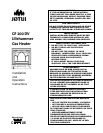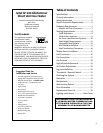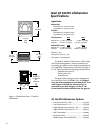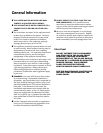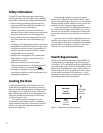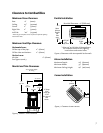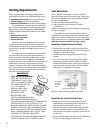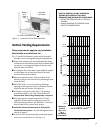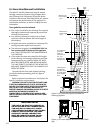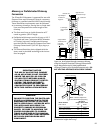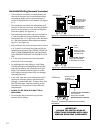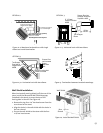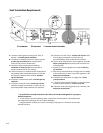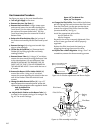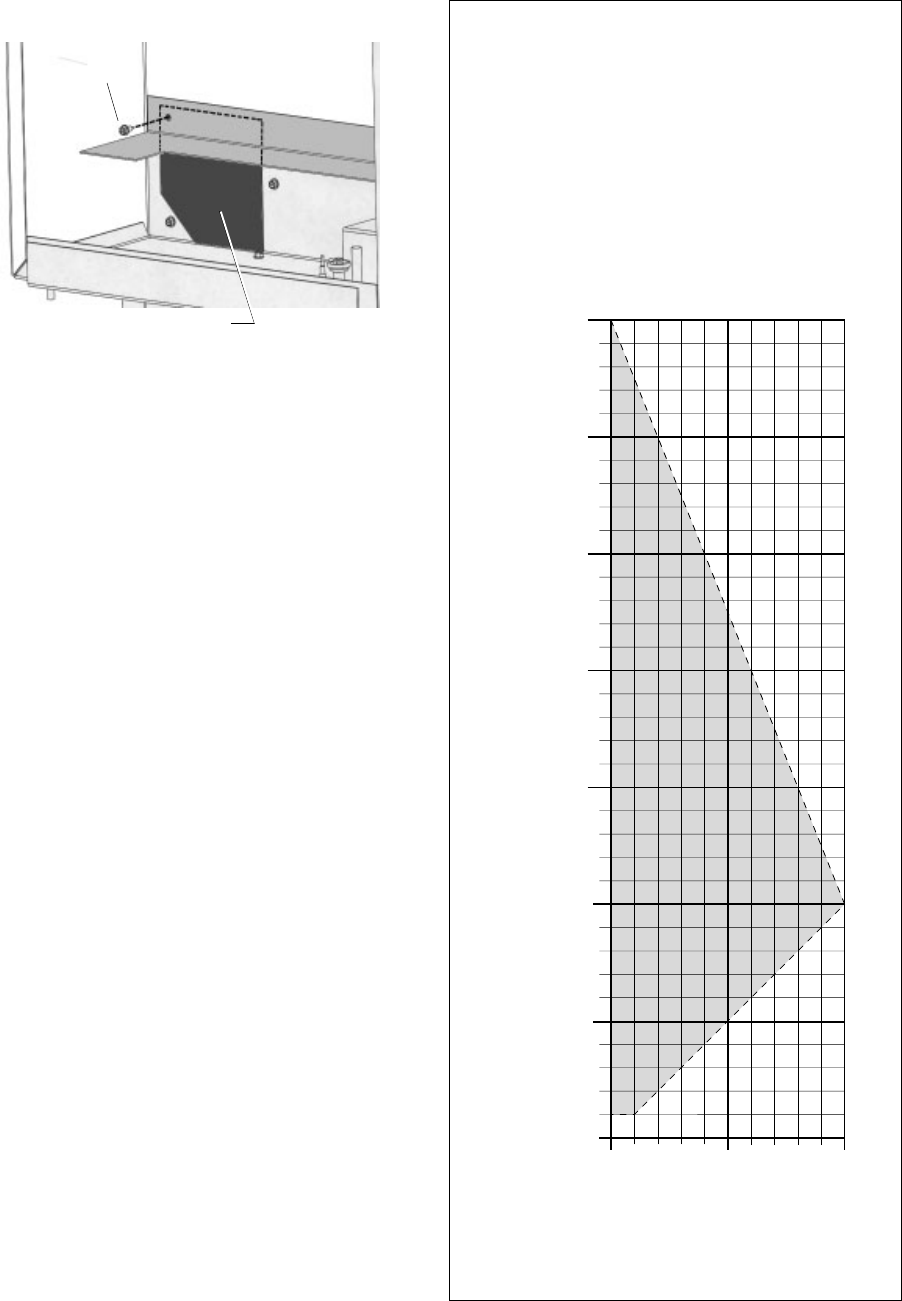
9
35 Ft.
(10.67 m)
30 Ft.
(9.14 m)
25 Ft.
(7.62 m)
20 Ft.
(6.10 m)
15 Ft.
(4.57 m)
5 Ft.
(1.52 m)
1 Ft.
(.30 m)
10 Ft.
(3.05 m)
10 Ft.
(3.05 m)
5 Ft.
(1.52 m)
VERTICAL RUN
HORIZONTAL RUN
Figure 7. Install the Air Inlet Restrictor Plate.
Rear Wall
of Firebox
Air
Deflector
Remove
this
screw
only
Air Intake Restrictor Plate
Table 1. Vertical vent run Termination Window.
Vertical Venting Requirements
These requirements apply to any installation
that includes a verrtical vent run.
The GF 200 DV Lillehammer can be vertically vented
through a roof or ceiling following these guidelines:
n Steep roofs, nearby trees, and predominantly windy
conditions can contribute to poor draft or down-draft
occurances. Increasing the height of the vent may
alleviate these conditions.
n Use Simpson Dura-Vent Wall Straps (#988) to support
an offset pipe run at three feet intervals to avoid
excessive stress on the offsets.
n Whenever possible use 45° elbows instead of 90°
elbows as they are less restrictive to exhaust gas and
intake air flow.
n GAS VENT RULE: In no case shall any discharge
opening on the cap be less than 2' (610mm) horizon-
tally from the roof surface. See Figure 11.
n A firestop is required at every floor. The opening
should be framed to 10" X 10" inside dimension.
Simpson Dura-Vent Ceiling Firestop #943 is required.
n Any venting that is exposed above the first floor,
regardless of attic space or living space, must be
enclosed. Always maintain the required 1" clearance
from all sides of the vertical vent system.
n Install the Exhaust Gas Restrictor in all Vertically
Terminated vent systems. See the Adding Restriction
section on page 8.
n A vertical run in any horizontally-terminated system
must rise a minimum of 1 ft. See Fig. 12-5.
VERTICAL VENTING, OR ANY HORIZONTAL
VENTING WITH VERTICAL RISE, MUST
TERMINATE (END) WITHIN THE SHADED AREA.
• RESTRICTOR REQUIRED ON ALL VERTICAL
VENTING.
• ALWAYS MAINTAIN THE PROPER CLEAR-
ANCES TO COMBUSTIBLES.
Minimum
Vertical
Rise =1 ft
for a
Horizontal
Termination
.



